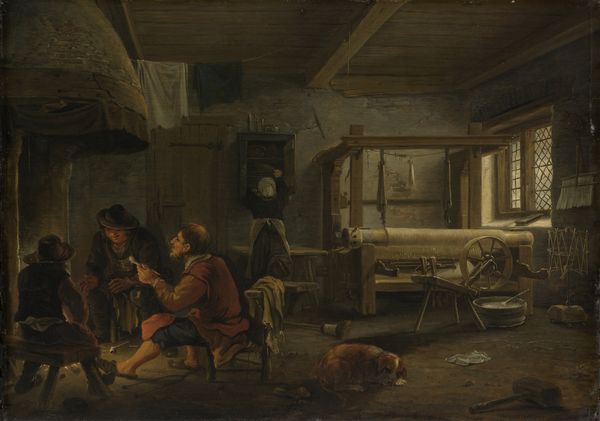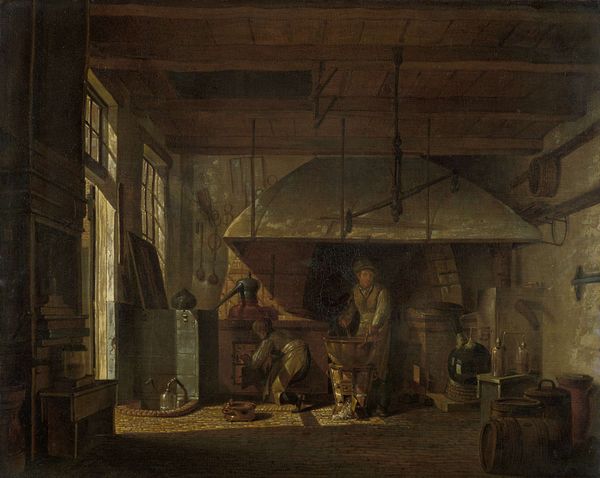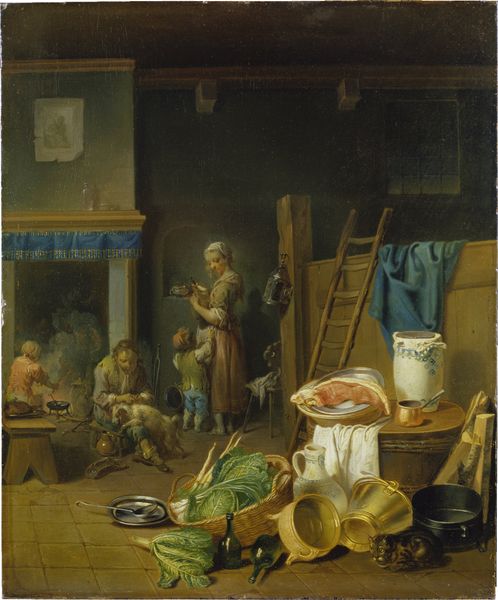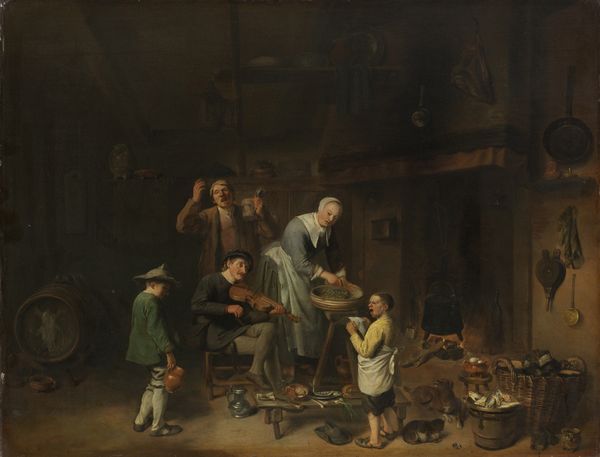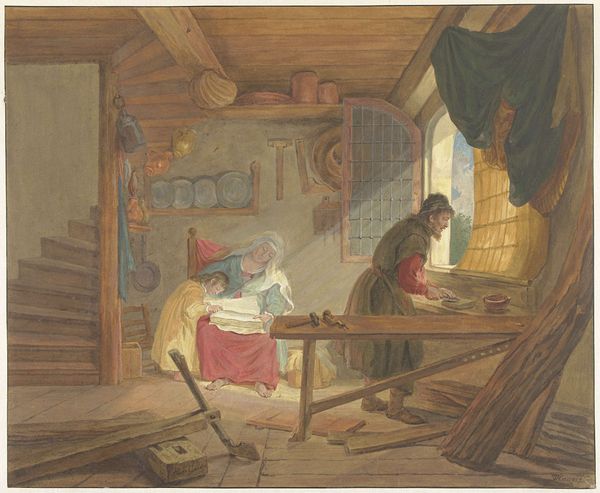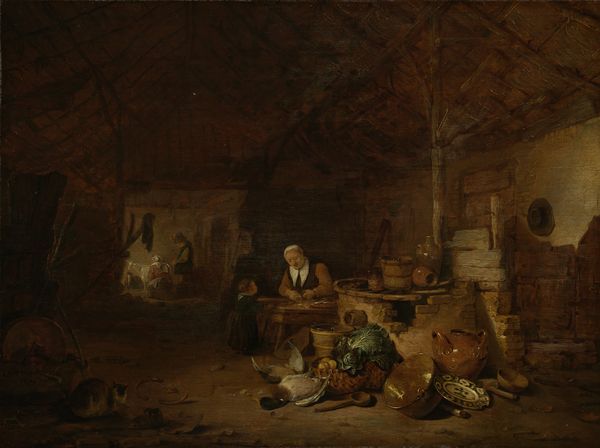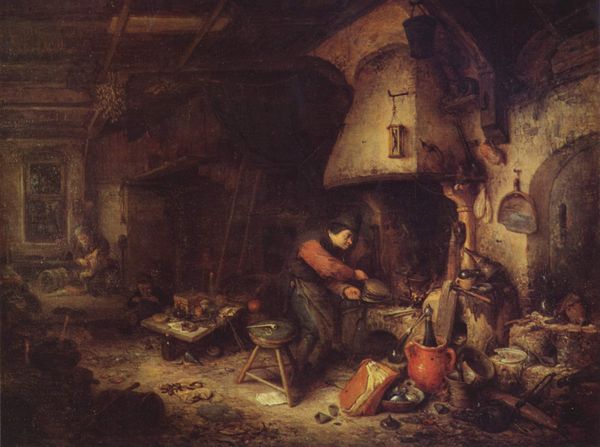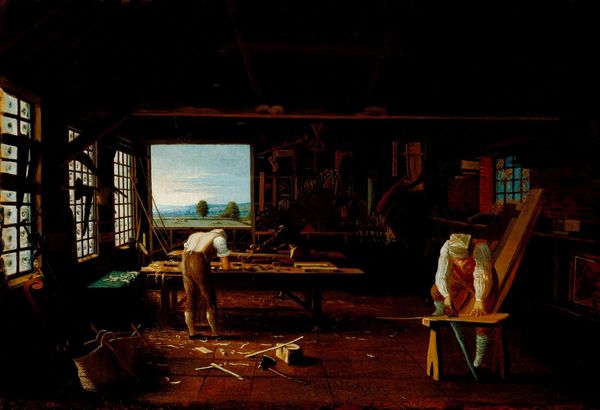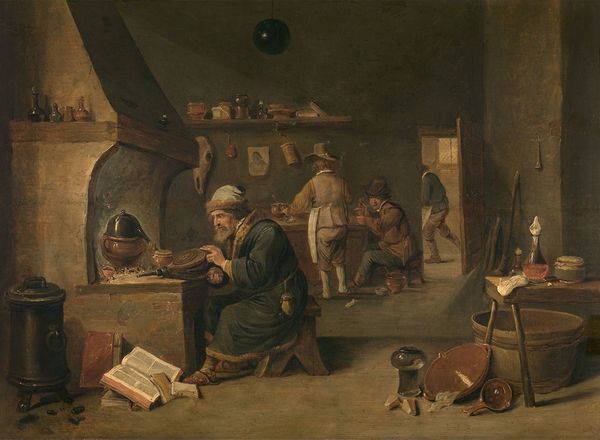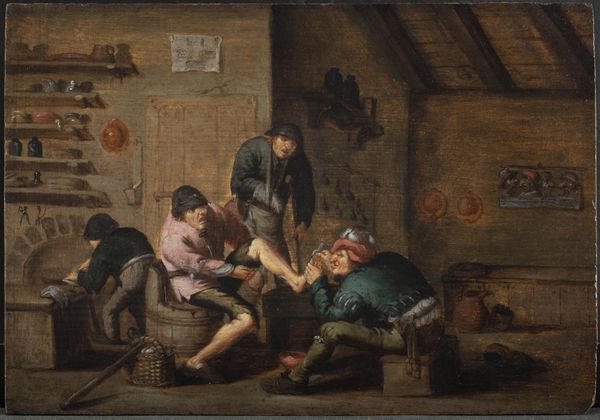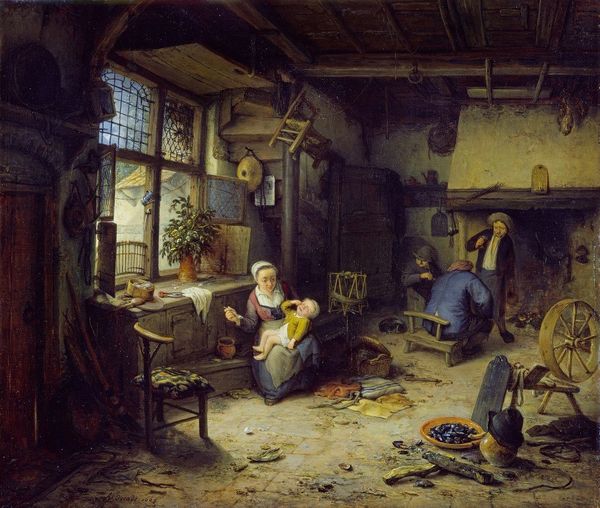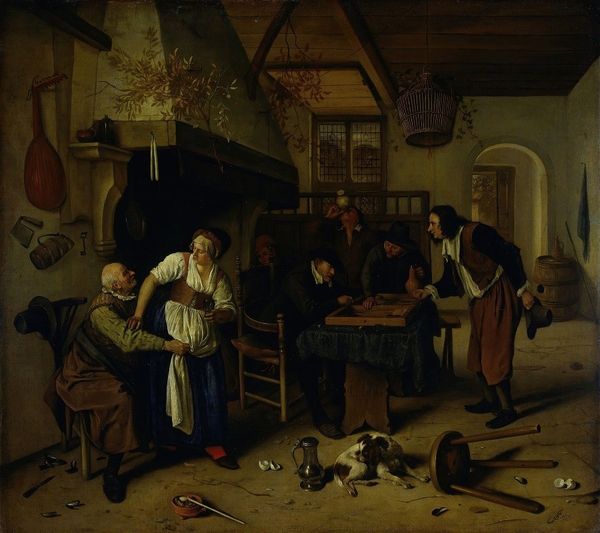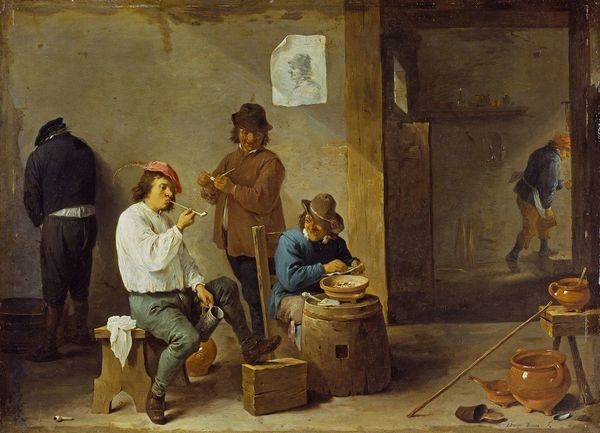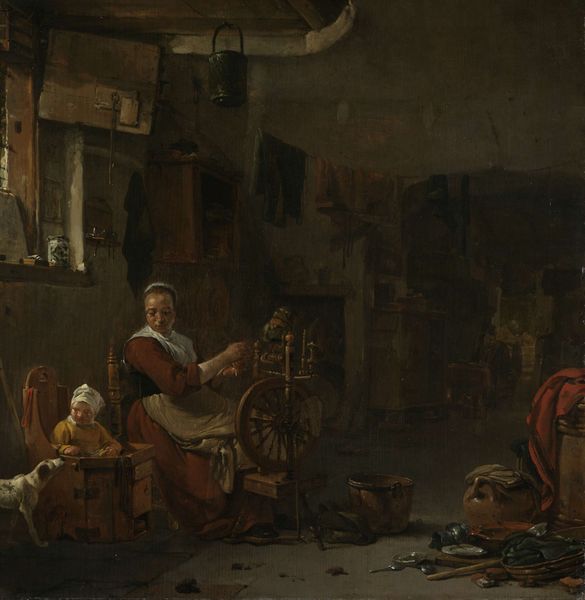
painting, oil-paint
#
portrait
#
narrative-art
#
baroque
#
dutch-golden-age
#
painting
#
oil-paint
#
landscape
#
genre-painting
Dimensions: support height 45 cm, support width 55.7 cm, outer size depth 7 cm
Copyright: Rijks Museum: Open Domain
Editor: Cornelis Gerritsz Decker's "Weaver's Workshop," created in 1659 using oil paints, is just lovely. The warm, earthy tones create such an intimate atmosphere, and I’m curious about all the objects filling the space. How do you interpret this work? Curator: For me, this isn't simply a depiction of labor; it's a snapshot of cultural memory. Notice the 'A' above the window, a symbolic marker? It subtly hints at domestic order and tradition, tying the present scene to a longer history of craftsmanship and family identity. What emotions does the inclusion of mundane objects evoke in you? Editor: A sense of comfort, definitely. Almost like peering into someone's home and imagining their daily routines. Curator: Exactly! Decker masterfully uses these details to convey a sense of continuity. Each tool, each basket, speaks to a tradition passed down through generations. It's not just about weaving cloth, it’s about weaving a community and a history together, don’t you think? Editor: I can see that. I hadn’t considered how much meaning could be embedded in what seems like a simple genre scene. The symbols become quite powerful when viewed through that lens. Curator: Visual symbols hold a lot of power in Dutch Golden Age paintings. They connect viewers to the cultural narrative, sparking emotional and intellectual recognition of collective cultural values that have persevered throughout history. Editor: That's a completely new perspective for me. I appreciate your explanation – it really opens up a new way to understand this kind of artwork. Curator: It’s fascinating how much symbolism can enrich a simple image. Now when you see this image, what memory does it evoke for you?
Comments
No comments
Be the first to comment and join the conversation on the ultimate creative platform.
